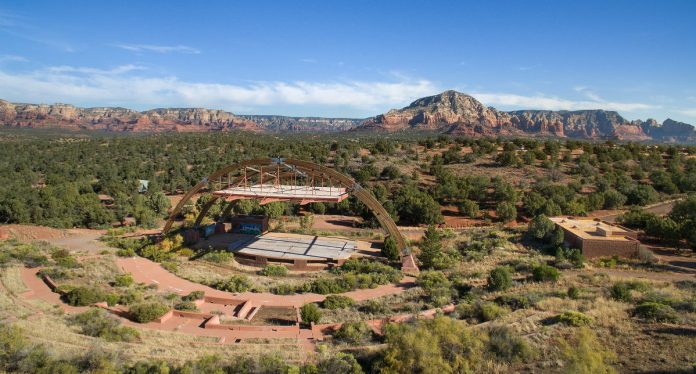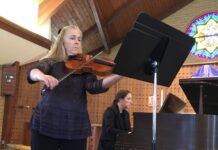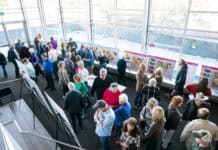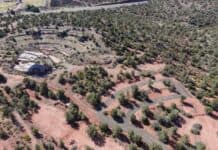
In most communities, if a 40-acre parcel of land goes up for sale, few residents would blink an eye. But that’s not the case in Sedona, especially when it’s one of the area’s most talked-about pieces of property.
The Sedona Cultural Park, located near Yavapai College’s Sedona Center in West Sedona, is officially on the market after years of speculation as to what may become of it.
The 40 acres are listed for $19.9 million. In addition, the State Route 89A frontage property and building leading to the park is for sale for $1.75 million with Russ Lyon Sotheby’s International Realty handling the sale of both.
“We’d sell them separately but in our minds, whoever buys the 40 acres, logically, could use the other property as their sales office and construction headquarters, even if it’s just in the interim,” said Mike Tennyson, who with his two business partners bought the land in 2003. “So, a buyer of the park would have first rights to the other property and if they didn’t want it, we’d sell it separately.”
Tennyson said their original plan 16 years ago was to buy just five acres of the Cultural Park for the purpose of building a hotel and conference center. After their offer for the five acres was approved by the then-Cultural Park board, the entire property was put up for sale and Tennyson and his partners decided to buy it all.
In 2006 a California developer, Fitch Industries, approached Tennyson about buying the entire park. A purchase agreement was drawn up with a city-approved plan to build 220 hotel rooms and a wellness village.
“But before they we able to move forward, they ran into financial troubles and the project dissolved,” he said.
The land was then forfeited back to Tennyson in 2009. About four years ago another developer sought to buy the land with a plan for a mixed-use community of residential, commercial and wellness center.
“It turned out that the developer did not have the financial backing to pull the trigger,” he said.
As for why he felt this was the time to officially put it on the market, he said he’s 68 and his business partners are 88 and 72 and all three want to “slow down a bit.”
“We all want to simplify our lives a bit,” said Tennyson, who lives in North Dakota. “But I know that if we were 10 to 15 years younger, we’d be here ready to develop the land.”
In a perfect world, Tennyson said they would like to have one buyer purchase the entire 40 acres. But, they’re not opposed to selling a portion to a residential developer and the rest to a resort developer. If that’s the case, Tennyson and his partners would wear the hat of master developer until the project is complete.
“The ideal developer would be somebody that is skilled in mixed use in terms of residential and resort development,” he said.
But for anyone who buys the land, Tennyson said it’s important they lead with the housing component to the project, since that is what’s needed most in Sedona these days. If a potential buyer is not interested in the housing component, he said they’ll take their name and number but that may be as far as it goes.
“I think the land needs a strong residential component including 250 to 300 units but I’m not necessarily talking houses — I mean apartments and condos,” he said. “That would help support the village concept we had. So it should include retail, restaurants, galleries and I really embrace the ideal of a wellness area. Sedona’s got that brand already as a place to come and heal. And of course, a resort, conference center and spa. So, that’s where I’d like to see it go. I think this could be a huge asset to the community and a legacy project for whomever develops it.”





















